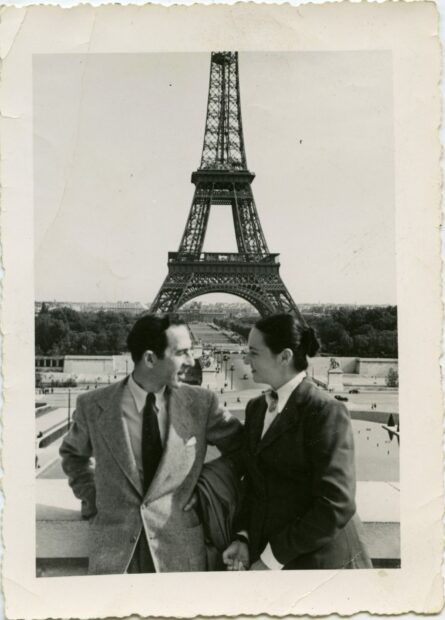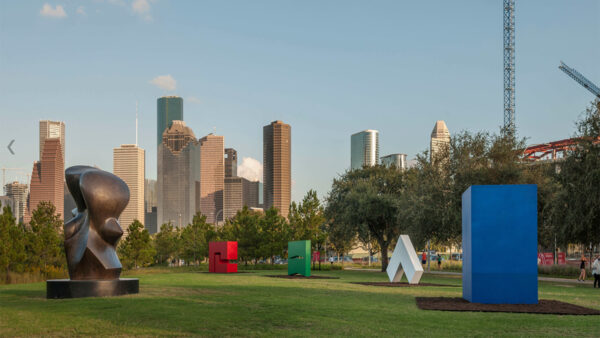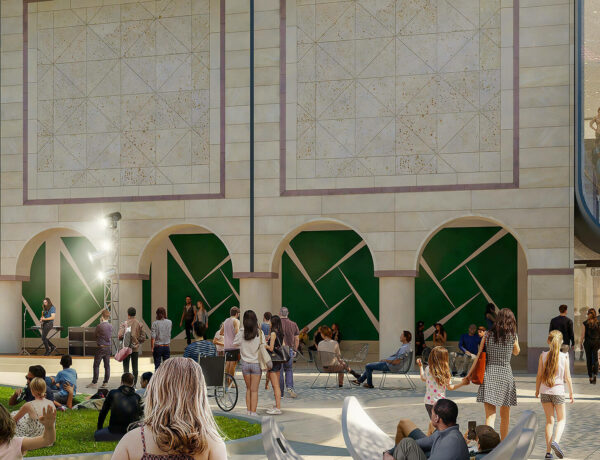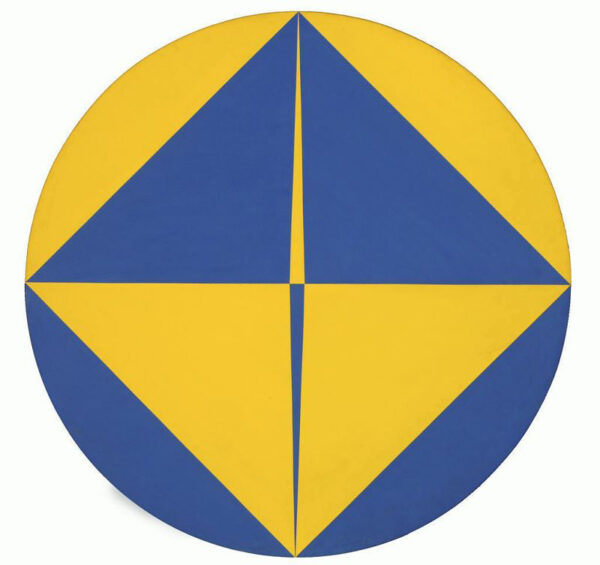Carmen Herrera, a Cuban-born abstract artist who gained fame in her late 80s, died on February 12, 2022 at the age of 106.
Though Ms. Herrera’s artistic practice dates back to the early 1940s, her work was not widely acknowledged by the art world until the early 2000s. Her abstract paintings and sculptures that use crisp lines, high contrast, and simple shapes and forms have earned their place alongside artists such as Piet Mondrian, Barnett Newman, and Latin American art groups like the Venezuelan Los Disidentes, Brazilian Concretists and the Argentinian Grupo Madi.

Carmen Herrera, “Black and White,” 1987, acrylic on canvas, 72 x 60 inches. Image courtesy of Lisson Gallery.
Ms. Herrera was born in Havana, Cuba in 1915. From 1938-39, she studied architecture at the Universidad de La Habana. During this time she met and married her husband, Jesse Loewenthal, who was visiting Cuba from New York. She then moved to New York with Mr. Loewenthal, and studied at the Art Students League from 1942-43. The couple lived abroad in Paris from 1948 to 1954, and Ms. Herrera painted and exhibited throughout that time.

Carmen Herrera and Jesse Loewenthal in front of the Eiffel Tower Paris c.1948-53. © Carmen Herrera, Image courtesy of Lisson Gallery.
When she returned to New York, Ms. Herrera continued to produce and exhibit work; she counted artists such as Willem de Kooning, Mark Rothko, Ad Reinhardt, and Barnett Newman among her friends, but did not rise to the same level of fame as them until much later. In 1998, El Museo del Barrio was the first institution to exhibit a major survey of her work. The exhibition, Carmen Herrera: The Black and White Paintings 1951–1989, was organized by the institution’s former curator Carolina Ponce de Leon.

Carmen Herrera, “Estructuras Monumentales,” 2020-2021, installed at Buffalo Bayou Park. Image courtesy of Lisson Gallery.
In 2020, the Museum of Fine Arts, Houston presented an exhibition of more than thirty works by Ms. Herrera which included paintings, drawings, prints, and sculptural pieces. Concurrently, the Buffalo Bayou Partnership, a Houston-based nonprofit organization which works to protect and revitalize the banks of the bayou, exhibited a show of outdoor sculptures by the artist, which had previously only been exhibited in New York.

Detail of Carmen Herrera mural commissioned by the Blanton and made possible with generous funding provided by the Kahng Foundation, near the entrance of the Mari and James A. Michener Gallery Building. Image courtesy of the Blanton Museum.
In 2021, the Blanton Museum of Art at the University of Texas at Austin commissioned Ms. Herrera to create a mural as part of a larger redesign of its outdoor spaces. Regarding the mural for the Blanton, Ms. Herrera stated, “It is an honor that my first major public mural commission will be with the Blanton Museum of Art, an institution that I have admired and respected for decades. As a museum that has long been at the forefront of collecting work by artists of Latin American descent, as well as the place where Ellsworth Kelly realized his last great work of art, entering the collection at this moment marks a high point in my long career.”

Carmen Herrera, “Rondo (Blue and Yellow),” 1965, acrylic on canvas, diameter: 100 cm. Hirshhorn Museum and Sculpture Garden, Smithsonian Institution, Washington, DC, Joseph H. Hirshhorn Bequest Fund, 2007
Ms. Herrera’s work is in public and private collections including the National Gallery of Art, the Hirshhorn Museum and The Smithsonian American Art Museum in Washington DC; the Museum of Modern Art, the Whitney Museum of American Art, and El Museo del Barrio in New York; the Walker Art Center in Minneapolis, the Pérez Art Museum in Miami, the Museum of Fine Arts Boston, and the Museum of Fine Arts, Houston.



